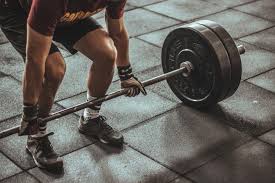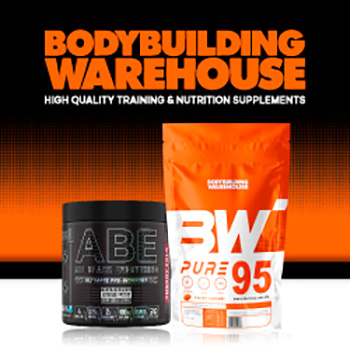
Fitness Workouts For Beginners
Key Takeaways
- When starting fitness workouts for beginners, it’s important to apply progressive overload. This is the fundamental principle behind all strength gains, you must consistently challenge your muscles with increasing demands to see results.
- Compound movements like squats, deadlifts, and bench presses deliver the greatest strength benefits by recruiting multiple muscle groups simultaneously.
- Nutrition timing matters consuming protein within 30 minutes post workout can maximize muscle protein synthesis and accelerate recovery.
- Quality sleep is perhaps the most underrated factor in strength development, with 7-9 hours being optimal for muscle repair and hormonal balance.
- Mental techniques like visualization can improve strength performance by up to 15% according to research, making the mind muscle connection a critical component.
Want to transform your body into a strength building machine? The path to exceptional power isn’t just about lifting heavy it’s about lifting smart. Whether you’re stuck at a frustrating plateau or just beginning your strength journey, these science backed strategies will revolutionize your results. Precision Fitness has helped thousands of clients break through their limitations using these exact methods, proving that strategic training trumps random effort every time.
Training Techniques That Build Raw Power
The difference between average gym goers and truly powerful athletes often comes down to training methodology, not just effort. Your body adapts specifically to the demands you place on it, which means random workouts produce random results. Let’s break down the foundational techniques that consistently produce real world strength.
-
Master Progressive Overload: The Foundation of Strength
Progressive overload isn’t just a training principle it’s THE training principle. Your muscles only grow stronger when forced to adapt to tensions beyond what they’ve previously experienced. Think of it as teaching your body a lesson, adapt or stay the same. The beauty of progressive overload is its simplicity and versatility.
While adding weight is the most obvious method, true masters implement multiple progression strategies. You can increase resistance, add repetitions, decrease rest periods, improve form, or increase time under tension. For example, if you’ve been stuck at 225 pounds on bench press for weeks, try adding just 2.5 pounds per side or performing an extra rep before failure.
Track every workout meticulously to ensure you’re progressing in some measurable way each session. Even micro progressions of 1-2% weekly compound dramatically over time. This isn’t merely advice it’s the fundamental law of muscular adaptation that makes all other strategies possible.
-
Embrace Compound Movements for Maximum Muscle Recruitment
Compound movements are the heavyweight champions of strength development, recruiting multiple muscle groups and triggering the most significant hormonal response. The squat, deadlift, bench press, overhead press, and row should form the foundation of any serious strength program. These movements create a systemic effect that isolation exercises simply cannot match.
When you perform a heavy deadlift, you’re not just working your back you’re engaging your legs, core, grip, and even your shoulders in a synchronized pattern that mirrors real world strength demands. This neurological training is invaluable. Studies consistently show that programs centred around compound movements produce greater strength gains than isolation focused routines.
- Squats: Activate 200+ muscles in a single movement
- Deadlifts: Generate the highest overall power output of any lift
- Bench Press: Develop upper body pushing strength through multiple joint angles
- Overhead Press: Build the critical shoulder stability needed for all upper body movements
- Rows: Balance pushing strength with essential posterior chain development
-
Optimize Your Rep Ranges for Strength vs. Hypertrophy
The age old debate about rep ranges has a simple answer, they all work, but they work differently. For pure strength development, the research is clear that heavy loads in the 1-5 rep range produce the greatest improvements in maximal strength. This lower rep range primarily develops neural efficiency and fast twitch fibre recruitment teaching your body to activate more muscle fibres simultaneously.
However, don’t neglect the 6-12 rep range entirely. This hypertrophy focused zone builds muscle mass, which creates greater potential for strength development. The ideal approach combines both, focus primarily on low rep strength work while incorporating strategic hypertrophy training to build the muscle that will eventually express greater force.
Try this structure, begin with your heaviest compound lift for 3-5 sets of 3-5 reps, then perform assistance exercises in the 6-8 rep range, finishing with isolation movements for 8-12 reps. This gives you the neural benefits of heavy training while still building the muscular foundation needed for long term progress.
-
Perfect Your Form Before Adding Weight
Technical proficiency separates the truly strong from those who merely look the part. Poor form not only limits the weight you can ultimately lift but creates compensatory patterns that lead to injuries and plateaus. Before chasing numbers, master the mechanics of each movement pattern through deliberate practice and frequent form checks.
Record your lifts regularly from multiple angles to catch subtleties you might miss during execution. Watch for common issues like knee valgus during squats, lumbar rounding in deadlifts, or shoulder positioning in bench press. These small technical flaws can rob you of significant strength potential while increasing injury risk.
Consider periodically reducing weight by 20-30% to refine your technique. This temporary step back often leads to breaking through stubborn plateaus when you return to heavier loads with improved mechanical efficiency. Remember that perfect practice makes perfect performance.
Eat for Power: Protein Timing and Daily Requirements
Protein serves as the fundamental building block for muscular development and repair. For strength athletes, research consistently recommends 1.6-2.2g of protein per kilogram of bodyweight daily significantly higher than the general population recommendation. This higher intake ensures your body has ample amino acids available for the continuous repair and growth process triggered by intensive training.
Timing matters almost as much as total quantity. The post workout anabolic window represents a critical opportunity to jump start recovery. Consuming 20-40g of high quality protein within 30 minutes of training completion can significantly enhance muscle protein synthesis. Whey protein proves particularly effective due to its rapid absorption and complete amino acid profile, though whole food sources like chicken breast, eggs, or Greek yogurt work effectively when practical.
Distribute your remaining protein intake evenly throughout the day in 4-6 meals containing at least 20g each. This approach maintains a positive nitrogen balance and keeps amino acid levels consistently elevated. Remember that protein quality matters prioritize complete sources containing all essential amino acids, particularly leucine, which directly triggers muscle protein synthesis through the MTOR pathway.
-
Carb Loading: When and How to Maximize Energy Stores
Carbohydrates aren’t just calories they’re the primary fuel for high intensity strength training. Your muscles store carbohydrates as glycogen, which directly powers explosive movements like heavy lifts. When these glycogen stores deplete, strength performance dramatically decreases, regardless of motivation or technique.
Strategic carb timing creates a performance advantage. Consume 0.25-0.5g of carbohydrates per pound of bodyweight 1-2 hours before training to top off glycogen stores. Focus on easily digestible sources like white rice, ripe bananas, or sports drinks to minimize digestive distress. For particularly demanding sessions, intra workout carbohydrates (15-30g per hour) can help maintain performance during longer training blocks.
Post workout, prioritize fast digesting carbs alongside protein to replenish depleted glycogen and amplify the insulin response, which enhances nutrient delivery to damaged muscles. Your total daily carbohydrate needs depend on training volume and body weight, but most strength athletes require 3-7g per kilogram of bodyweight, with higher amounts needed during intense training blocks or when deliberately gaining muscle mass.
Recovery Methods That Build Stronger Muscles
The weight room breaks you down recovery builds you up. Too many lifters obsess over training variables while neglecting the critical recovery period where actual strength adaptations occur. Without proper recovery, even the most perfectly designed program will fail to produce results and eventually lead to overtraining.
Recovery isn’t passive it’s an active process that demands as much attention as your workouts themselves. The most successful strength athletes typically dedicate equal time and resources to recovery modalities as they do to actual training. Let’s examine the two most powerful recovery tools in your arsenal.
-
Sleep Like a Champion: How Rest Creates Strength
Sleep represents the most potent recovery tool available, yet remains criminally underutilized by most strength enthusiasts. During deep sleep phases, your body releases approximately 70% of daily growth hormone production, repairs damaged tissues, and rebalances neurotransmitters essential for maximum force production. Studies consistently show that even minor sleep deprivation (6 hours vs. 8 hours) can reduce strength performance by 10-30% while simultaneously increasing injury risk. Prioritize 7-9 quality hours nightly by establishing a consistent sleep schedule, creating a cool, dark sleeping environment, limiting screen exposure before bed, and potentially using supplements like magnesium or melatonin when necessary to optimize sleep architecture.
-
Active Recovery Techniques Between Heavy Sessions
Strategic movement between intense training sessions accelerates recovery through increased blood flow to damaged tissues without creating additional fatigue. Implement 15-30 minutes of zone 2 cardio (where conversation remains comfortable) on rest days to flush metabolic waste products while enhancing mitochondrial density and cardiovascular efficiency. Additionally, incorporate targeted mobility work for your primary lifting patterns hip mobility for squats, thoracic extension for overhead pressing, and hamstring/posterior chain flexibility for deadlifting. Tools like foam rollers, lacrosse balls, and percussion massagers can help break up fascial restrictions and trigger points that limit range of motion and force production, but remember that these tools complement rather than replace proper programming and adequate recovery time.
Mental Tactics for Breaking Personal Records
Physical strength begins in the mind. Elite lifters understand that mental fortitude often determines success when attempting challenging weights. Your brain serves as both your greatest ally and potential saboteur during maximum effort attempts.
Research consistently demonstrates that psychological factors can influence strength performance by 10-15%, regardless of actual physical capacity. This mental component becomes increasingly crucial as you approach advanced levels where physical adaptations occur more slowly.
-
Visualization Techniques Used by Elite Lifters
Visualization creates neural pathways identical to physical practice through a process called functional equivalence. Before attempting heavy lifts, spend 5-10 minutes mentally rehearsing perfect execution with all sensory details feel the bar in your hands, hear the weights clanking, and visualize successful completion from first person perspective. Olympic weightlifters and powerlifters routinely employ this technique before world record attempts.
For maximum effectiveness, practice visualization daily, not just before lifting. Create a mental highlight reel of your best performances, repeatedly accessing the feeling of successful lifts. Supplement visualization with positive self talk and specific performance cues that trigger proper technique. Research shows athletes who consistently practice mental imagery demonstrate significantly greater strength gains compared to those focusing exclusively on physical training.
-
Training Partners and Accountability Systems
The right training partner can add 5-10% to your performance through a combination of spotting, technical feedback, motivation, and healthy competition. Studies show that exercising with others increases workout intensity, duration, and consistency compared to training alone. Select partners slightly stronger than yourself to create an aspirational pull toward improvement.
Beyond partners, establish concrete accountability systems. Schedule fixed workout times, publicly commit to specific goals, or use training apps that track adherence. Consider hiring a coach for periodic form checks and program design. The financial investment alone often drives greater commitment, while expert guidance prevents technical plateaus that limit progress.
Your 7 Day Plan to Implement These Strength Building Tips
Attempting to implement all ten strategies simultaneously typically leads to overwhelm and abandonment. Instead, follow this structured 7 day implementation plan to systematically integrate these principles into your training regimen. Start with the foundational elements that deliver the greatest immediate impact.
Begin by auditing your current program against the progressive overload principle. On day one, create a detailed tracking system for your core lifts and establish specific progression targets for the next 4-8 weeks. Days two and three should focus on technique refinement for your primary compound movements, possibly reducing weights temporarily to perfect form. By mid week, analyse your nutritional intake, particularly around workout timing, and make necessary adjustments to protein and carbohydrate consumption.
The latter half of the week addresses recovery components establish a consistent sleep schedule and integrate active recovery sessions between training days. Finally, implement visualization practices before your heaviest training session and evaluate potential training partners or accountability systems that align with your schedule and goals.
7 Day Implementation Schedule
Day 1: Establish tracking system & progressive overload targets
Day 2-3: Technique refinement for compound movements
Day 4: Optimize nutrition timing & macronutrient distribution
Day 5: Implement sleep hygiene practices
Day 6: Integrate active recovery protocols
Day 7: Practice visualization & establish accountability
Frequently Asked Questions
Throughout my years coaching strength athletes from beginners to advanced competitors, certain questions consistently arise regarding strength development. The following responses address the most common concerns and misconceptions about building functional strength.
Remember that while general principles apply universally, individual responses vary based on training history, genetics, and recovery capacity. Always monitor your body’s feedback and adjust accordingly.
How quickly will I see strength gains using these tips?
Strength adaptations follow a predictable but individualized timeline. Beginners typically experience rapid improvements during the first 4-8 weeks primarily through neural adaptations your nervous system becomes more efficient at recruiting existing muscle fibres. Intermediate lifters can expect measurable strength increases every 2-4 weeks when following proper programming. Advanced athletes might require 4-8 weeks between significant strength breakthroughs. Consistency trumps speed a slow, steady approach that allows for proper recovery between intense sessions yields superior long term results compared to aggressive programs that lead to burnout or injury.
Should beginners focus on all 10 tips at once?
Beginners should prioritize mastering proper technique on compound movements, establishing consistent training habits, and ensuring adequate protein intake. These three fundamentals deliver approximately 80% of possible results while building the foundation for advanced methods. Start with full body workouts 3 times weekly focusing on the main movement patterns: squat, hinge, push, pull, and carry. Record your workouts and increase weights gradually only when you can complete all prescribed repetitions with excellent form.
- First Priority: Movement technique & consistency
- Second Priority: Progressive overload & protein intake
- Third Priority: Sleep optimization & recovery methods
- Advanced Focus: Periodization, nutrition timing & mental techniques
What’s more important for strength: nutrition or training?
This question creates a false dichotomy training and nutrition operate synergistically rather than independently. Training provides the stimulus that signals your body to adapt, while nutrition supplies the raw materials necessary for that adaptation. Without proper training, even perfect nutrition merely maintains current status. Conversely, optimal training without nutritional support leads to incomplete recovery and stalled progress. If forced to quantify their relative importance for pure strength development, a reasonable distribution might be 60% training methodology, 25% nutritional support, and 15% recovery practices. For body composition changes, nutrition typically plays a larger role, while for skill based strength demonstrations, training specificity becomes more crucial.
How do I know when to increase the weight I’m lifting?
The decision to increase weight should be based on performance indicators rather than arbitrary timelines. The general guideline: when you can complete all prescribed repetitions with proper form for 2-3 consecutive workouts, increase the weight by 5-10 pounds for upper body exercises or 10-20 pounds for lower body movements. For smaller muscle groups or isolation exercises, even smaller jumps of 2.5-5 pounds may be appropriate. This approach balances consistent progression with injury prevention. Advanced lifters may need to use fractional plates (1.25 pounds or less) to continue progressive overload when adaptations slow. Remember that progress isn’t always linear periodically incorporating de load weeks with reduced volume and intensity allows for super compensation and continued long term progress.
Can these techniques help me break through a long term plateau?
Long term plateaus typically result from adaptive resistance your body has fully adjusted to current training stimuli. The techniques outlined here provide multiple pathways to overcome stagnation by introducing novel stimuli. Most plateaus stem from insufficient variation in training variables, inadequate recovery, or nutrition that doesn’t support training demands. Implement a systematic approach, first, examine your recovery practices, particularly sleep quality and stress management. Next, assess nutritional factors, especially caloric adequacy and protein intake. Finally, introduce strategic variation in your training through altered rep schemes, exercise selection, or training frequency while maintaining progressive overload. For particularly stubborn plateaus, consider a complete training reset reduce volume and intensity by 40-50% for 1-2 weeks before beginning a new progression cycle with renewed focus on the fundamentals.
Remember that strength development is a marathon, not a sprint. Consistency over months and years trumps short term intensity every time. Focus on gradual, sustainable progress rather than dramatic transformations, and you’ll build strength that lasts a lifetime. The most important factor is adherence the perfect program implemented inconsistently yields poorer results than a good program followed religiously.
By implementing these science backed strategies systematically, you’ll develop not just greater physical strength, but the mental fortitude and discipline that carries over into every area of life. True strength transcends the gym it becomes a mindset that approaches challenges with confidence and persistence.
For personalized strength coaching and nutritional guidance tailored to your specific goals, Precision Fitness offers comprehensive programs designed by certified strength specialists who understand the science of human performance. Your strength journey is unique get the expert support you deserve.






